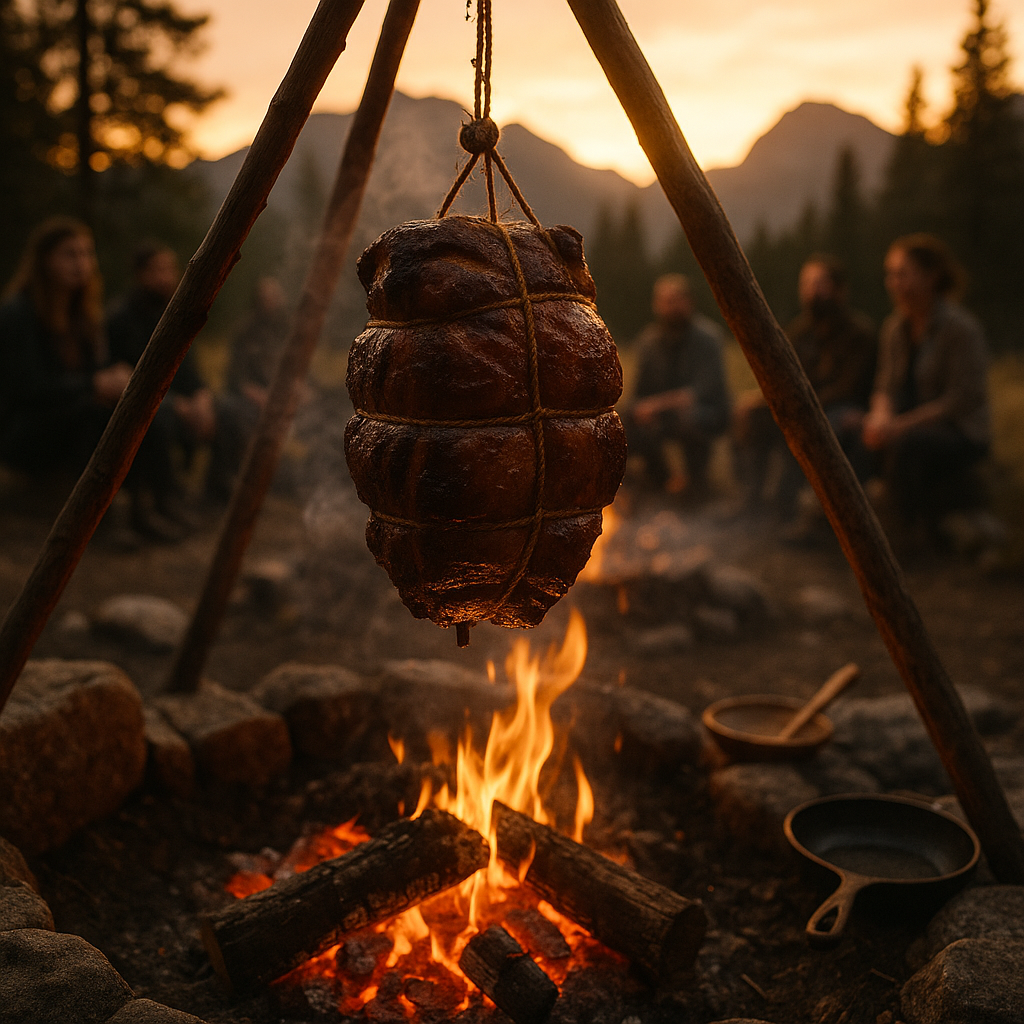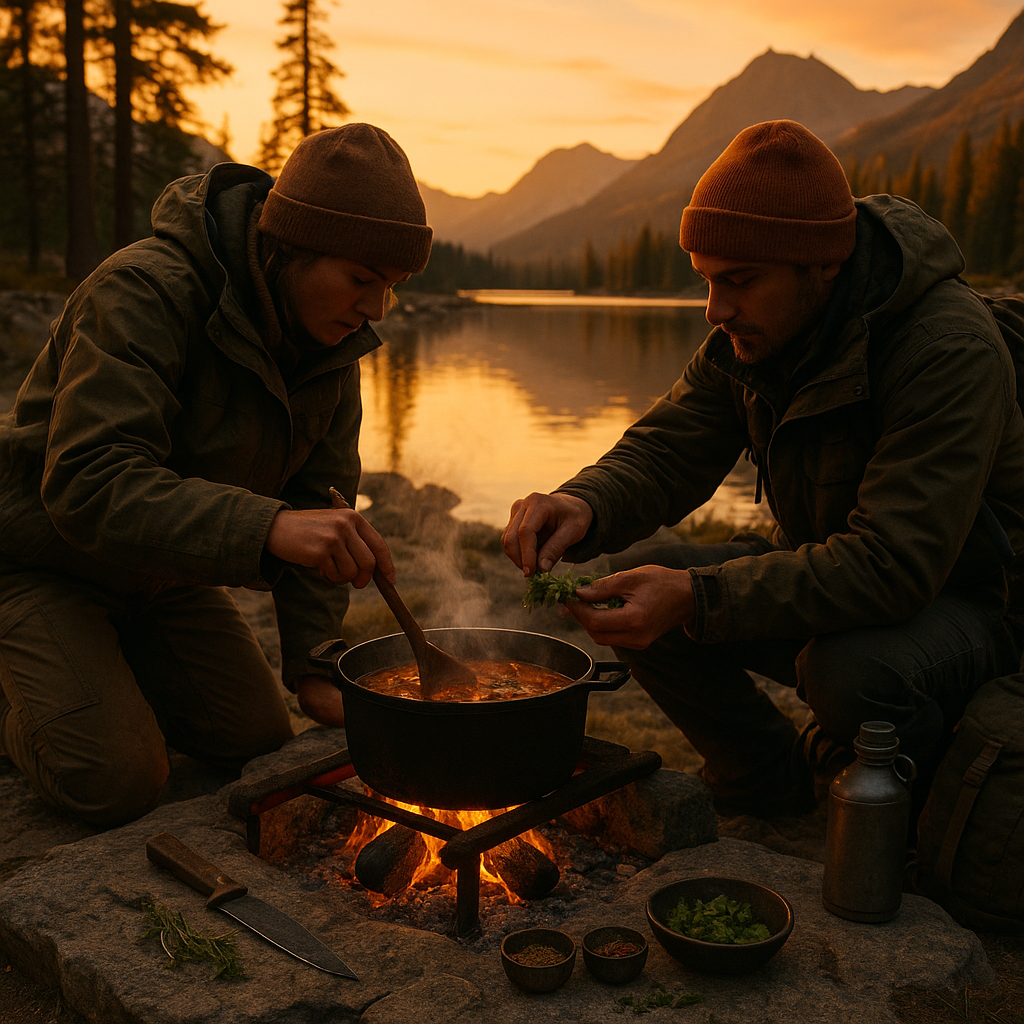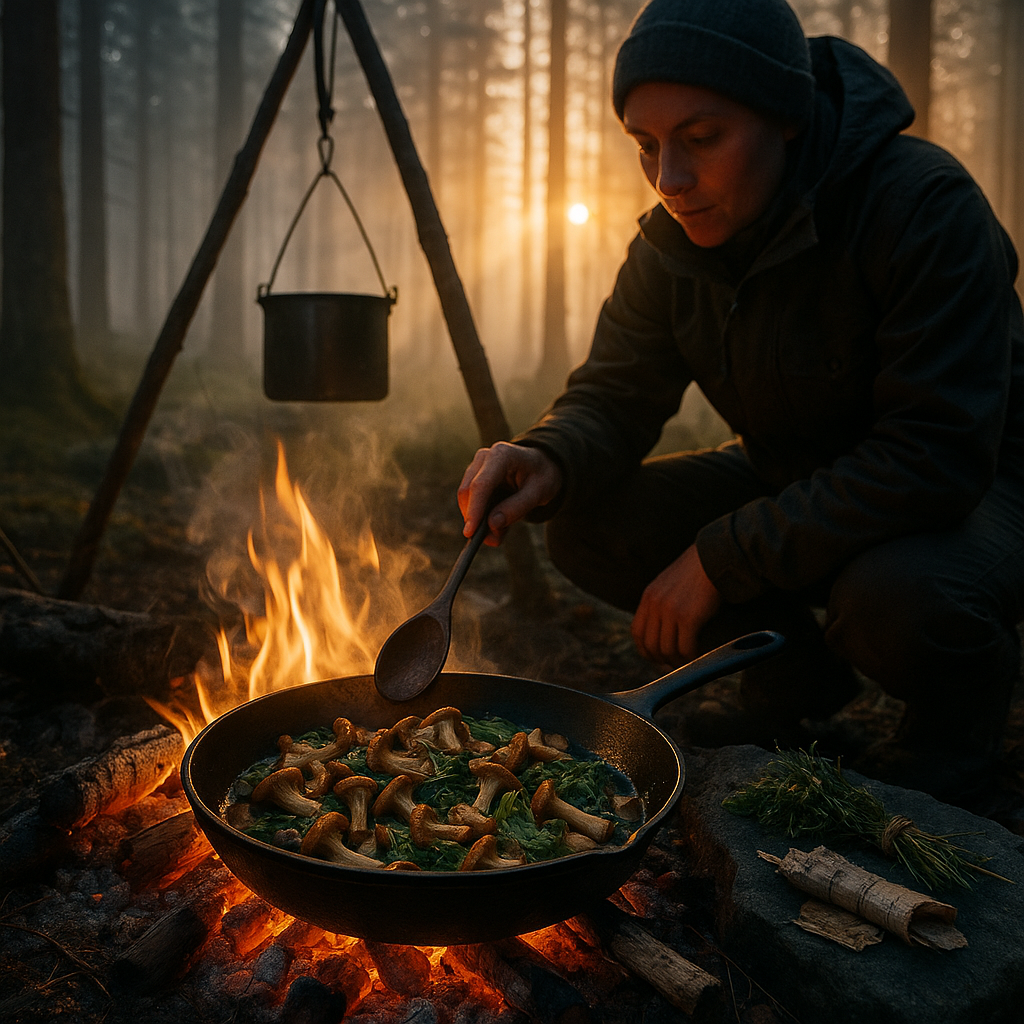Key Takeaways
- Darkness unlocks heightened sensory awareness: Cooking in low light sharpens your senses of smell, touch, and hearing. This opens a deeper connection to ingredients and every step of the process.
- The Lantern Effect transforms cooking into storytelling: Lantern or shadow light creates an evocative atmosphere, turning meal preparation into an intimate, almost mythical ritual that feels story-worthy and timeless.
- Primal tradition rediscovered through shadow cooking: Cooking in darkness reconnects us to historical and ancestral practices, breathing new life into the communal essence of fire-lit gatherings from generations past.
- Mindful cooking becomes organic in darkness: When visuals fade, distractions fall away. You naturally become absorbed in the textures, aromas, and quiet rhythms of cooking, guided by mindful presence.
- Safety is redefined through tactile intuition: Without relying fully on sight, your physical awareness and precision heighten. You learn to master tools and techniques by touch, building new confidence and care.
- Cooking by lantern enhances culinary intuition: Low visibility calls you to trust your senses and instincts, fueling creativity as you adapt recipes or improvise flavors on the fly.
- Shadow cooking blends nature and nurture: The interplay of light and darkness conjures a meditative ambiance, fostering a profound sense of calm, focus, and connection with the surrounding environment.
Through the Nightfire Experience, cooking becomes more than a daily task. It evolves into a sensory journey that nurtures the soul, rekindles ties to food and history, and awakens a primal reverence for nature’s enduring forces. Now, let’s immerse ourselves in how this practice bridges tradition and modernity within the culinary arts.
Introduction
Step away from the ordinary kitchen and into the realm of shadow, where the Nightfire Experience transforms a simple meal into a journey for the senses. Here, only lanterns or the flicker of firelight illuminate your path. Every sizzle and scent becomes magnified, drawing you to cook not only with your hands, but with all your senses alive and alert.
In this softened darkness, everyday distractions melt away as primal instincts come alive. You find yourself navigating ingredients by feel, listening to the subtle crackle of flames, and moving with heightened awareness through the rhythm of knife and skillet. Nightfire cooking gently revives ancient traditions, blending mindful presence with creative improvisation beneath a hush of night sky.
With every moment immersed in this elemental setting, you unlock new layers of sensory awareness, reshape intuition, and forge connections that reach through history and into the heartbeat of nature itself.
Stay Sharp. Stay Ahead.
Join our Telegram Channel for exclusive content, real insights,
engage with us and other members and get access to
insider updates, early news and top insights.
 Join the Channel
Join the Channel
The Primal Dance of Shadow and Flame
As dusk deepens and the world grows quiet, the act of cooking shifts into something timeless and elemental. The Nightfire Experience sparks dormant instincts, weaving us into a vast tapestry of ancestors who, for thousands of years, prepared meals by the light of moon and flame.
The Sensory Awakening
When darkness descends, the rest of our senses step into the foreground. The crack and pop of wood in the fire become their own language, signaling heat’s arrival and readiness. Sounds that, in daylight, might fade into the background. The nose sharpens, attuned to delicate changes in aroma that signal progress or potential. Fingertips grow wise, discerning temperature, texture, even doneness with surprising accuracy.
This awakening is not simply poetic romance but echoes real shifts in brain function. Neuroscience reveals that when visual input recedes, the brain actively powers up other sensory centers. Under this recalibration, preparing food becomes an embodied, intuitive act, and many cooks describe the experience as transformative.
What emerges is a new kind of attention, attuned, present, and deeply connected, that’s accessible to anyone willing to cook in shadow.
Ancient Wisdom in Modern Darkness
Shadow cooking is a bridge across ages. Ancient cultures on every continent practiced cooking by firelight, attuned to the subtle cues of heat and time. In Japanese tradition, the irori (an indoor hearth) offered families warmth, nourishment, and a gathering place for stories as evening fell. In the mountains of the Andes, Quechua communities have long gathered at dusk to slow-cook traditional stews, relying on the scent and crackle of wood to guide the process. Native American night cooks, too, trusted the language of steam, scent, and sound as they prepared communal meals.
Stepping into darkness today is a powerful act of remembering. Each time we step beyond the convenience of electric light, we draw on ancestral wisdom, transforming supper into something sacred and connected, a meal that’s part lived memory, part present wonder.
The Meditation of Shadow Cooking
Cooking in near-darkness becomes meditation in motion. The absence of dominant visuals creates a natural focus, encouraging you to slow your movements and savor each task. The chopping of vegetables (guided by touch rather than sight) acquires a soothing cadence. The subtle crescendo as oil reaches the perfect temperature sounds almost melodic.
Time itself begins to stretch and flex around your awareness. You learn to trust not just what you see, but what you sense, discovering a state of creative flow where the boundaries between cook, cooking, and environment blur and melt away.
This meditative quality of shadow cooking invites deep presence. The experience offers a simple antidote to the hurried, distracted mode of modern life, letting the quiet and the ritual itself become sustenance.
Practical Techniques for Night Cooking
Embracing the nightfire experience calls for a blend of technique and intuition. Here are some ways to enhance both safety and success in low-light cooking:
- Heat Reading: Gauge temperature without sight by hovering your hand at different heights above the flame, counting seconds until warmth is felt (a common practice for gauging grill heat in camping or outdoor culinary arts).
- Sound Mapping: Construct a mental map of your workspace by noting where pots, tools, and ingredients are placed. Use the distinct clinks, sizzles, and rustles as cues for what’s happening and where.
- Touch Techniques: Develop reliable methods for judging doneness (for example, using gentle pressure to test the springiness of bread, or sliding fingers along meat to find the right firmness).
- Scent Zoning: Place aromatic ingredients in separate areas so you can orient yourself by their smells while reaching or stirring.
These skills, once familiar, are assets not just in firelight, but in any kitchen, helping cooks develop greater intuition and confidence across cuisines and settings.
The Communal Shadow Feast
Cooking in darkness takes on a special depth when shared with others. The circle of fire draws people close, softens faces, and encourages stories to meander out across the night. Often, conversation shifts; silences linger naturally, and what’s said feels more intentional and honest.
In a shared nightfire meal, there is often a subtle choreography as participants navigate space and tasks by listening and anticipating each other’s movements. This sense of togetherness echoes older traditions, whether Bedouin feasts in desert camps, Appalachian creekside gatherings, or Scandinavian midsummer fires, where food and flame draw people together in profound and lasting ways.
As laughter and conversation rise and fall with the flames, you’re reminded that the communal act of breaking bread is one of the oldest comforts under the sky.
Safety and Modern Adaptations
While the magic of shadow and flame is timeless, safety remains paramount in any setting. Thoughtful adaptations make the experience both secure and inviting:
- Light Management: Employ minimal, gentle lighting (such as lanterns or candles placed at safe intervals) to maintain atmosphere while safeguarding hands, ingredients, and sharp edges.
- Space Organization: Keep the workspace clear of clutter, designate hot zones for open flames or heated pans, and mark walkways with tactile cues whenever possible.
- Tool Selection: Choose tools with distinct shapes and textures so they’re easily differentiated in the dark or by feel.
- Emergency Preparedness: Have backup lighting (like a headlamp or flashlight) within easy reach, saved for true emergencies but never far away.
By honoring these modern needs, shadow cooking becomes an accessible adventure for all, blending excitement and ritual with practical wisdom.
Stay Sharp. Stay Ahead.
Join our Telegram Channel for exclusive content, real insights,
engage with us and other members and get access to
insider updates, early news and top insights.
 Join the Channel
Join the Channel
Conclusion
Cooking in darkness, guided only by shadow and flame, offers far more than novelty or challenge. It is a return, a rekindling of instincts, presence, and the ancient rituals of community. Trading the certainty of sight for the richness of scent, sound, and touch, we step into a living tradition passed from hand to hand across centuries and continents.
In every culture and era, food has bound people together, drawing laughter and silence, awe and comfort, around the shared glow of fire. Nightfire cooking invites us to slow down





Leave a Reply